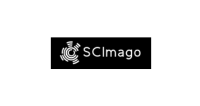Welfare and meat quality of cattle transported over different distances and in differently designed trucks (truck, trailer and double deck) in the region of Cuiabá/MT/ Brazil
DOI:
https://doi.org/10.5380/avs.v21i3.38234Palavras-chave:
bruise index, pH, stress, transport.Resumo
The transport of animals for slaughter is an important step in humane slaughter and factors such as truck design, transport distance and time and weather conditions have a high correlation with meat and carcass quality and must be adjusted for each producing region. The effect of transport distance (D1 = 180 to 250 km and D2 = 75 to 130 km) and truck design (C1= regular truck, C2= trailer and C3= double deck) were evaluated on welfare, meat and carcass quality of 120 Nellore cattle using a completely randomized design. Differences were observed in the pH values 1h post-mortem (p ≤ 0.05) between treatments, but this was not true for the values of pH 24 post-mortem in the same muscle (L. dorsi). Higher bruising frequency (1.09 and 1.02) and intensity (1.81 and 1.65) were found in the carcasses of animals transported by C3 in relation to other treatments (p ≤ 0.05). High blood cortisol levels were obtained in animals transported by C3 over distance D2, followed by C1 over distance D1. It was concluded that C3 over distance D2 showed poor welfare and carcass quality compared to the other treatments.
Downloads
Publicado
Como Citar
Edição
Seção
Licença
Autores que publicam nesta revista concordam com os seguintes termos:
- Autores mantém os direitos autorais e concedem à revista o direito de primeira publicação, com o trabalho simultaneamente licenciado sob a Creative Commons - Atribuição 4.0 Internacional que permite o compartilhamento do trabalho com reconhecimento da autoria e publicação inicial nesta revista.
- Autores têm autorização para assumir contratos adicionais separadamente, para distribuição não-exclusiva da versão do trabalho publicada nesta revista (ex.: publicar em repositório institucional ou como capítulo de livro), com reconhecimento de autoria e publicação inicial nesta revista.
- Autores têm permissão e são estimulados a publicar e distribuir seu trabalho online (ex.: em repositórios institucionais ou na sua página pessoal) a qualquer ponto antes ou durante o processo editorial, já que isso pode gerar alterações produtivas, bem como aumentar o impacto e a citação do trabalho publicado.













